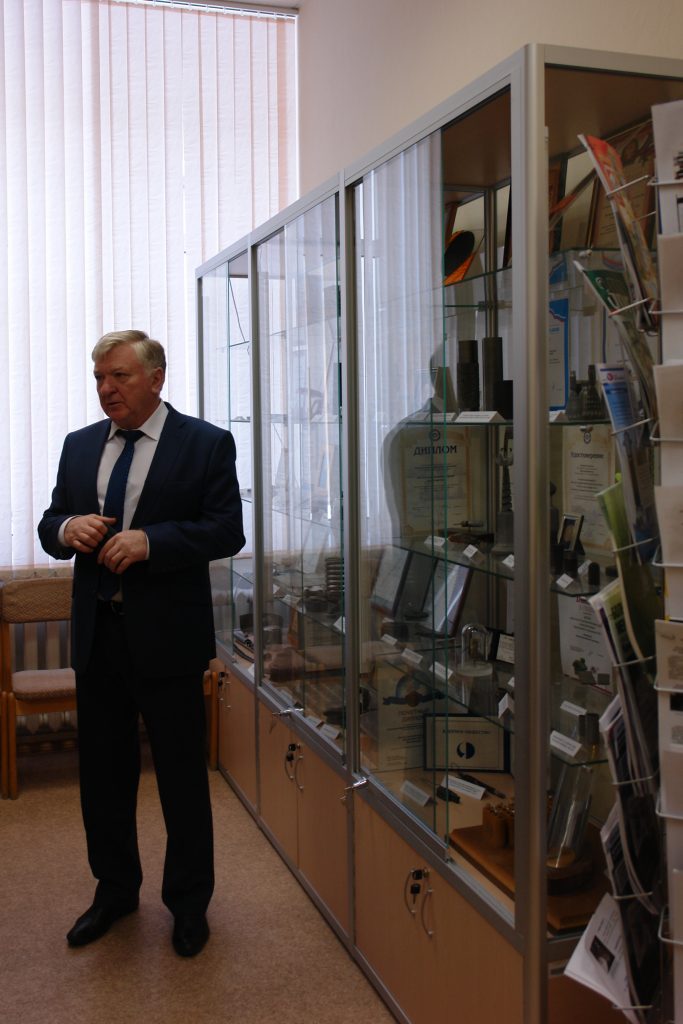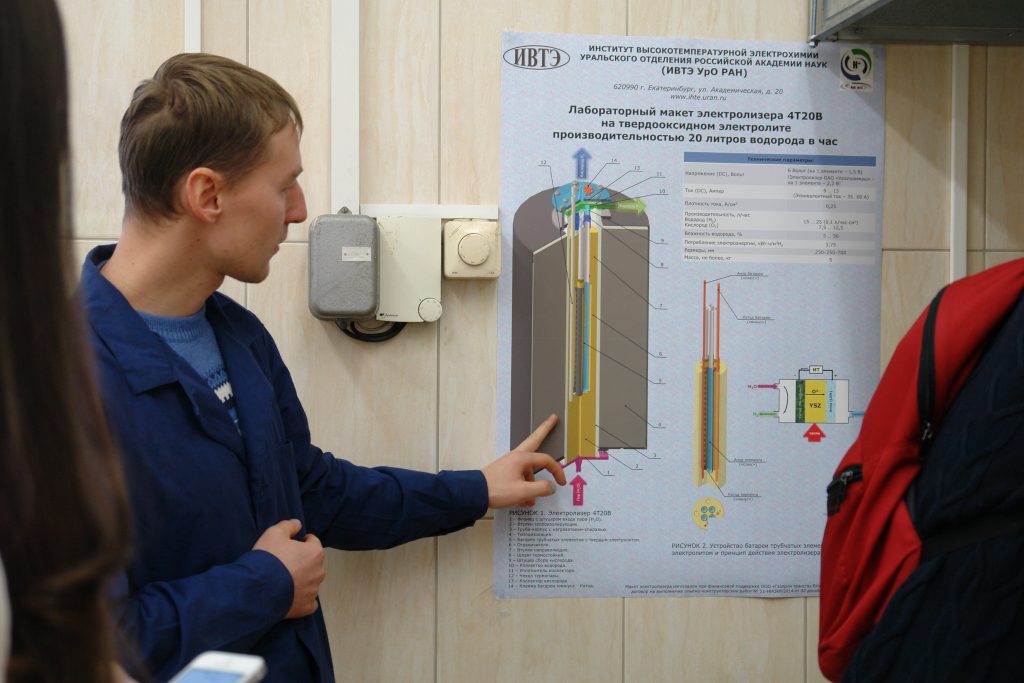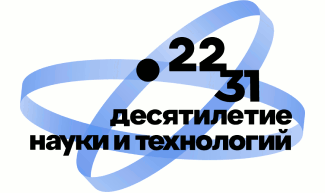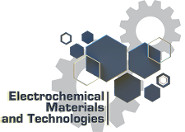On December 9 in the framework of the scientific foresight-session “Magnetism of the XXI century: physics, materials and technology” conducted by Institute of Metal Physics UB RAS and Ural Federal University press-tour in the institutions of the Ural Branch, where were established joint labs with UrFU took place.

In the Institute of high-temperature electrochemistry press-tour participants were greeted by the Scientific Director of IHTE Doctor of Chemistry professor Yu. P. Zaikov. Considering the limited time of excursion and great field of research interests, Yuri Pavlovich chose for presentation one of the most prospective directions of IHTE — creation of electrochemical power sources on the solid oxide electrolytes (SOFC). The first prototype of the electrochemical generator based on SOFC with 1 kW power was created in 1989, but during the 1990s crisis these works were slowed down and were resumed only in 2008 by collaboration with fuel company “TVEL”, a subsidiary of the Rosatom. Furthermore, investigations of the Ural electrochemists are very interesting for Gazprom, because autonomous power sources are irreplaceable in distant areas far from power lines. On the platforms of “Gazprom Transgaz Ekaterinburg” testing of electrochemical generators on SOFC are carried out since 2010. The last power plant with 1.5kW capacity has worked for more than a year.
Today the Institute of High-Temperature Electrochemistry is one of leaders in Russia in the field of creation of autonomous power sources. Now IHTE scientists are working under the technical project of Gazprom, focused on a new design of power plants based on fuel cells. It is intended primarily for the power stations of cathodic protection of main gas pipelines. Thus, the gas pipeline “Power of Siberia” will not be electrified. Stations of cathodic protection there will be provided with electricity by SOFC in the framework of an integrated project on the creation of high-tech production of autonomous power sources on the basis of the domestic highly effective solid oxide fuel cells.
This Project the scientists of IHTE implement in cooperation with colleagues from UrFU in the Joint laboratory of materials and devices for electrochemical power engineering created in spring of this year and supervised by Yu. P. Zaikov and Greek scientist professor Panayiotis Tsiakaras. Close interaction between academic institute and the largest university in the region leads to attracting young people to science. According to opinion of Yuri Pavlovich Zaikov, head of the Department of electrochemical production technology in UrFU, sets a clear system of research training from the baccalaureate to postgraduate.
Press-tour participants visited three laboratories of the Institute, where electrochemical power sources are developing: the laboratory of electrochemical material science, the laboratory of solid oxide fuel cells and the laboratory of electrochemical devices based on solid oxide protonic electrolytes and got an idea about phased stages of the process from the development of materials for SOFC, study of the kinetics of electrode processes to production of power plants.

According to Anton Kuzmin, the head of the laboratory of electrochemical material science PhD in Chemistry, SOFC is an indivisible organism each detail of which should work reliably. If we continue the analogy, the heart of SOFC is solid electrolyte, and the main task of laboratory employees — searching and investigation of solid electrolytes for future advanced devices. In the laboratory scientists develop advanced methods for the synthesis of oxide powders with predetermined particle size and properties, gas-tight ceramic, micro and nanostructured films and carry out the studies of electrode materials and glass-sealants.
Guests were demonstrated an original measuring installations for a comprehensive study of electrotransfer processes in oxide systems.
In the laboratory of solid oxide fuel cell headed by Maxim Ananyev, who has recently defended his doctoral dissertation at the age of 31, journalists were shown equipment in the center for collective use, as well as unique hand-made installations on the basis of quadrupole mass spectrometers for investigation of the kinetics of electrode processes by isotopic exchange method. In the laboratory are being developed the basic “building blocks” constituting the generators based on SOFC — it is the electrochemical cells that support the operation of the entire device. Maxim explained that in order to make an efficient electrochemical cell is necessary to understand the mechanisms of the processes that occur in them, including long term operation, in details. In the laboratory of solid oxide fuel cells technology of forming a single cell with the capacity of more than 2 W/cm2 was recently developed.
In the laboratory of electrochemical devices based on solid oxide protonic electrolytes leaded by PhD in Chemistry A.K. Demin, guests were exhibited 180W power installation. PhD in Chemistry Alexey Vylkov commented its operation. An electrochemical generator «consumes» methane and generates electricity, but that’s not all. It can even serve as a heater of premises — researchers are developing the technology of receipt the heat from the installation wall. Analogues of such a device are only available in the USA. In the nearest future the Ural electrochemists are going to make a sample with 3kW capacity.
After visiting the IHTE laboratories, which can be called youth without exaggeration, press-tour participants verified that it is the wonderful platform to fully realize the positive ambitions for those young people who seriously want to do science.





